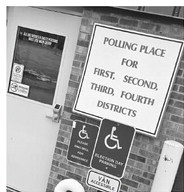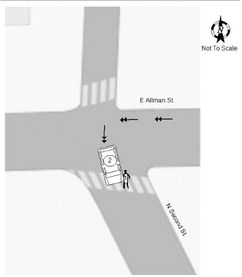Gilman schools look at changes to post retirement benefits


The Gilman School Board at it meeting Monday night discussed an issue with health reimbursement arrangement (HRA) for some district employees.
District administrator Wally Leipart said the district has language in its HRA benefit plan that states an employee who chose option A must retire by June 30, 2022 in order to receive a retirement benefi t. He said the district has three individuals with option A who feel retirement may no longer be in their best interest. Leipart said as the language is written, if the individuals decide to keep working past that date, they will no longer have retirement benefits, adding that past or current board members never intended to put any employee in that position.
Leipart said the district also discovered some employees may have thought the benefit would pay for any eligible medical expenses. He said the district has since learned that would not meet the non-discriminatory rules of post-employment benefits. Leipart said the original intent when the plan was put together was to reduce the district’s other post employment benefit (OPEB) costs, which were growing at a rate that was putting the district at a financial hardship and wouldn’t be affordable, and to provide a premium-only benefit similar to the one being replaced.
Leipart said if the board wanted to give employees who selected option A the opportunity to switch to option B, he recommend setting a deadline to make the switch prior to May of next year. He said that would give the employees several months to think about it and see if that is what they wanted to do and also gave the district time to adjust next year’s budget for the additional expense.
Leipart went on to say it is important to know that if an employee does switch options, the $200,000 set aside to pay for option A benefits would revert back to the district. He said the employee would, in effect, be trading their benefits of option A for the option B benefits. Leipart said if the employee does make the switch, the district would have to make a one-time catch-up payment to cover the switch.
Board president Bruce Ewing asked if the funds set aside for option A would cover the catch-up payment. Leipart said they would. He said the catchup payment would be done the same way it was when the plan was put into effect in 2017 and they would receive $1,500 for each year of employment through the current year for a cost of approximately $45,000 to $50,000 for each of the three employees.
Leipart said there was no rush to make a decision that night and now that the board members had all the information necessary to make a decision, he suggested they take some time to think about what they wanted to do. The board members agreed that would be a good idea.
The board also considered a request from the Amish community for an increase in the reimbursement the district paid for transportation services for Amish students.
Leipart said under state law, Gilman is required to provide transportation for students to both public and private school within the district, but leave it up to the district to decide how to provide that service. The Amish schools contract with a provider for transportation services and the district reimburses the school at a current rate of 58 cents per mile with a route of 150 miles ($87 per day) for a total of $14,442 for the 2019-2020 school year. He said last year, the district received $6,755 in aid for providing transportation for Amish students to offset some of the reimbursement costs, but due to few students being transported this year, the amount is expected to be less than $6,000. Leipart said the Amish schools’ actual cost with their previous contractor was 85 cents per mile at 150 miles ($127.50 per day) for a total of $21,165 for the 2018-19 school year. He said the schools’ actual cost with their current contractor is $180 per day for a total of $29,880 for the 201819 school year, a difference of $8,715. As a result, Leipart said, the Amish schools are requesting the reimbursement payment from the district be increased to $23,157.
Leipart said an alternative would be for the district to eliminate the mileage reimbursement and reorganize its bus routes to get all 42 Amish students on a bus route with the Gilman Elementary School being a transfer hub for the Amish schools. (Poplar Grove and Hay Creek. The other Amish school in the district, Pleasant Meadow, currently isn’t requesting transportation.) He said this will increase mileage to the routes and would likely cost between $10,000 and $15,000. However, Leipart said, the Amish schools have requested their students not ride the bus with public school students and/ or be transferred to another bus at the Gilman school. He added providing a separate bus route for Amish students could easily cost the district an additional $65,000 a year. Following a lengthy discussion, most board members were not in favor of adding another bus route. The board instructed Leipart to meet with the transportation committee to continue working on the issue and bring it back to the board at a future meeting.
Leipart briefly updated the board on the eSucceed Charter School budget. He said statewide, the number of students choosing online and personalized learning is increasing every year and by creating the charter school with six other school districts, the district has reduced the risk of losing students through open enrollment to other districts that are providing those opportunities.
Leipart said the eSucceed Governances Board is responsible for the fiscal management of the charter school and has contracted with the Gilman district to administer the funds. He said the total budget for the charter school is $434,177. Leipart said the governance board has budgeted $250,000 from a fiveyear $800,000 federal grant to fund a portion of the budget with the remaining $184,717 funded through statewide open enrollments, consortium member course fees and consortium membership funds.
Leipart said as it stands now, Gilman’s share comes to $33,000. Leipart said Gilman receives $12,650 to administer the charter school funds. Of the $33,000, he said $15,000 of that is instructional cost that would have to be accounted for in other areas if it wasn’t being spent in the charter school. Overall, Leipart said, when you think about it, the actual expenditure for the charter school was costing the district approximately $5,000. He cautioned this was only a projected budget and actual expenditures will be determined at the end of the fiscal year.
Tech ed instructor Tyler Pocket gave a brief talk about Pirate Ship Productions (PSP), a business started this year by the tech ed students at Gilman. He said several new pieces of equipment donated to the tech ed department allow students to do screen printing, laser engraving, wood working projects and so on. Pocket said the goal was to earn $20,000 for the school this year and anticipated PSP will reach that goal. He said the business has been a positive experience for the tech ed students, helping them to develop the confidence and skills they will need to enter the workforce once they leave school.





